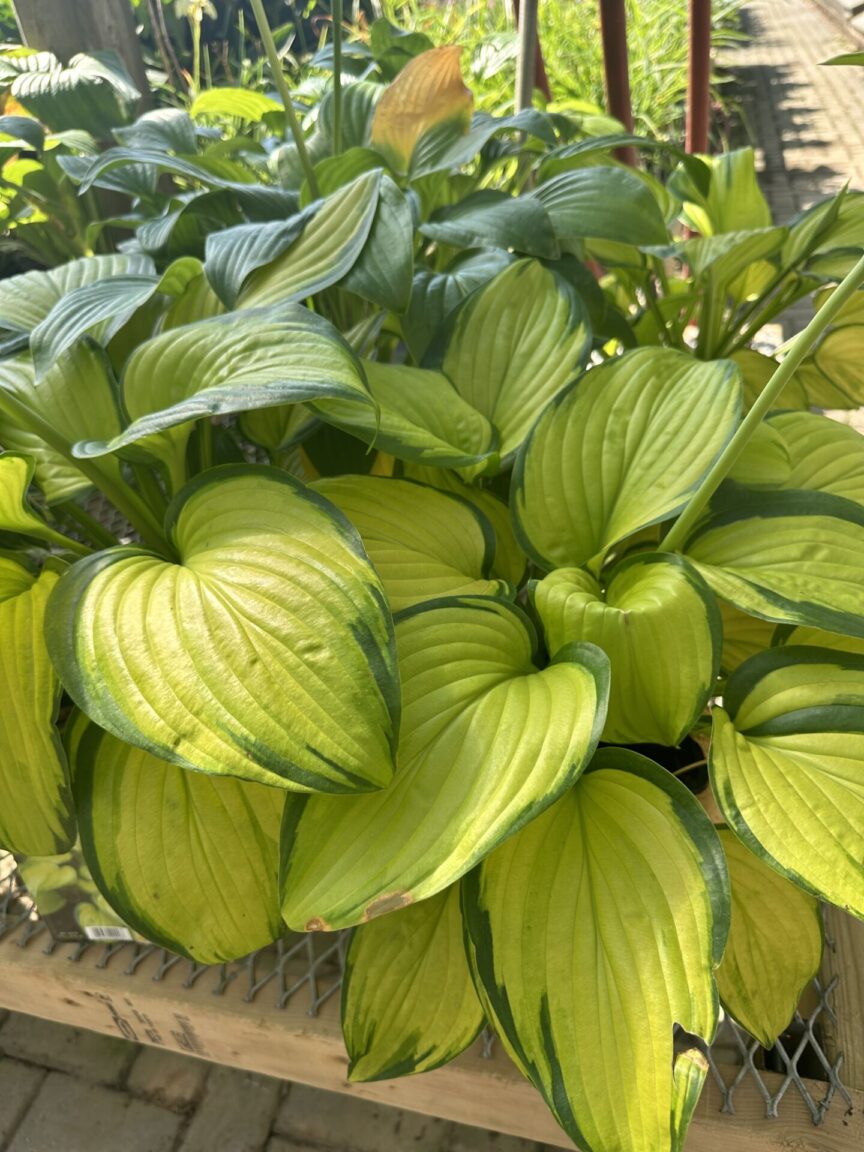Sometimes, it’s nice to have a flowering plant that can fill a large space in the summer and then die back or disappear in winter. The space may be under an eave where snow and ice could damage a year round shrub. Maybe the space is close to a deck, patio, or walkway where you want the fullness of a plant in the summer but want to be able to shovel snow there in the winter.
The answer is shrub-like perennials. There are some perennials that can grow 3+ feet tall and wide in one season. They can provide color, flowers, foliage and contrast to your yard and will dieback to the ground each fall.
For sunny spots, nothing beats the hardy hibiscus. This is a relative of the subtropical, woody hibiscus, but is a hardier perennial. It emerges late and slowly from the ground in spring, but once it gets warm, the plant explodes with growth. By mid to late summer, it’s flowering and continue to flower well into fall with 7-inch colorful, show-stopping blooms. These plants can grow up 4 feet tall and wide to quickly fill an area and will die back in the winter months. Tall garden phlox, black eyed susan, grasses and speedwell are other sun loving perennials that will grow well in one season.
For shade, large perennials with showy leaves can really showcase a garden bed. There are hundreds of hosta varieties available to grow, and some of the best grow huge with vibrant leaves of blue greens or bright yellow leaves with some producing tall flowering stems in mid to late summer. Other showy shade perennials are coral bells, ferns and foxglove.
Keep in mind that all plants – perennials and annuals — are programmed by Mother Nature to survive. All they need is the right amount of sunlight, food, water, and an occasional haircut.
Tips:
Here are some ways to encourage perennials to return:
• Make sure they can be grown in your zone
• Plant them in a spot that gets the right amount of sun or shade
• Ensure you are watering and fertilizing according to the plant’s needs
• Prune or divide overgrown plants to rejuvenate them
• Remove spent flowers and damaged foliage
Perennials require less work than annuals, simply because they last longer than one season and don’t require replacing every year. Find the right one for the right area of your garden and you will be rewarded with bold colors from flowers and foliage from spring all the way until fall.

